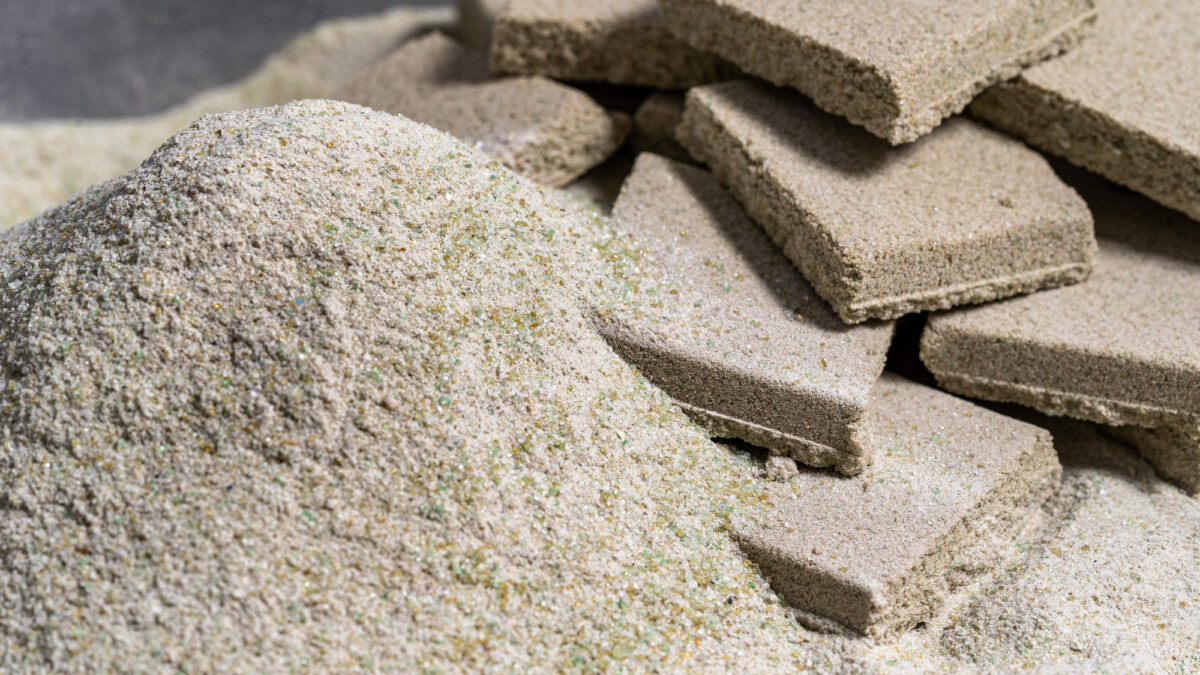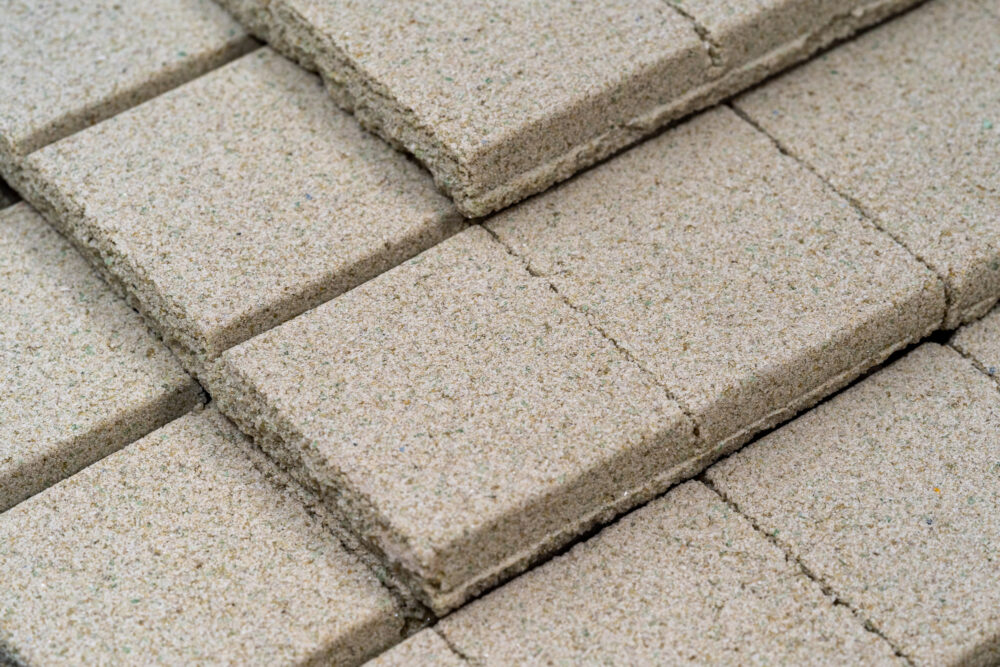“With this development, we have set a new milestone in increasing the glass recycling rate.”
Robert Kien | Technical Manager at REMONDIS Recycling GmbH & Co. KG
For many years, Dutch tomato growers were said to hold the patent for semi solidifying water. Austrian and German specialists have now succeeded in solidifying glass sand …
For more than three decades, recycling and glass manufacturing specialists have been trying to develop industrial processes for solidifying fine and very fine glass particles from recycling. So far without significant technical and economic success.
The resulting fine glass produced while processing glass waste in the glass recycling industry – unlike the vast majority of recycling fragments – cannot be used, or to a very limited extent, in the glass melting process. Grinding these glass fragments into glass powder or glass sand is also considered problematic with regards to the tank lining. The reason for this is the highly complex physical and chemical relationship involved in glass production.
Finally, there is a technical solution that also promises to be economically advantageous!
During their around three years of cooperation, specialists from SAB – a leading company in the field of special machine construction – and REMONDIS Recycling – the European market leader in glass recycling – have succeeded in developing a new process for solidifying glass sand. The PATENT-PROTECTED PROCESS and trend-setting DESIGN of the PROCESSING PLANT resulting from this cooperation now make it possible to further process the glass sand produced from fine glass in the first step into solid briquettes. These, in turn, can be easily and safely melted in glassworks and fed into container production without any risk.
The use of the REGlass product resulting from this process leads to lower energy requirements in glass production and, as a result, to reduced CO2 emissions. Natural raw material resources are conserved, and the product glass packaging therefore becomes even more attractive from an environmental standpoint. The fully automatic system can be used directly at the glass recycling plant in order to avoid additional intermediate transport. Since REGlass is very similar to conventional recycling cullet in terms of its shape and consistency, there are no additional requirements with regard to storage and transport.
The REGlass name stands for another factor in the sustainability of glass packaging.


